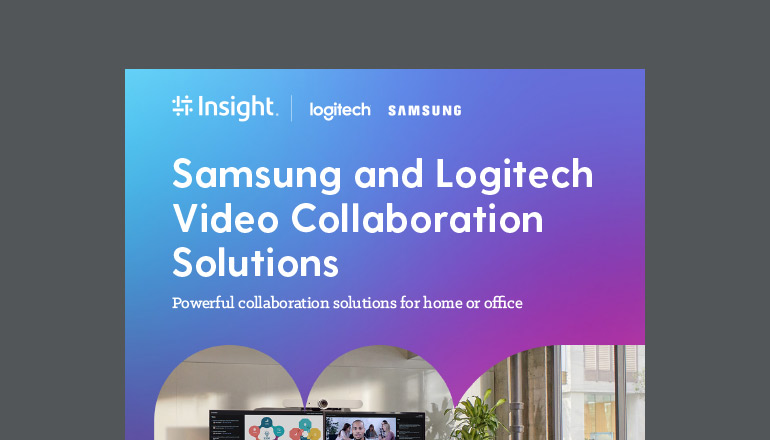Tech Journal Getting Back in the Game: A Playbook for Business and IT Leaders
By Stan Lequin / 22 Sep 2020 / Topics: Agile Modern workplace Featured Intelligent edge

The start of 2020 hit every industry with unexpected challenges — but now it’s time to learn from our mistakes, seek inspiration from others and innovate in order to emerge on top in the second half.
On a bright and sunny New Year’s Eve in 1988, the Chicago Bears and Philadelphia Eagles stepped onto Soldier Field for a highly anticipated divisional playoff “grudge” game. But late in the second quarter, something unexpected occurred.
A dense, eerie fog rolled in from Lake Michigan and engulfed the field. It became so thick coaches and fans couldn’t see the action on the field. Players would take a few steps and disappear from each other’s sight. In spite of the challenging conditions, the game played on.
Surreal, unforeseen atmospheric conditions fated the playoff game to become infamously known as the Fog Bowl, and one of the weirdest games in football history.
In March 2020, a surreal, unprecedented event changed the course of business. COVID-19 caught us on the blind side, causing us to make in-the-moment changes and obscuring our vision for the future. We couldn’t accurately predict what the world might be like beyond a day.
Even today, the future is hazy. But regardless of these challenging conditions, business must keep on. There can be no waiting on the sidelines for conditions to be better.
The Bears won that day, 20–12, defeating the Eagles for the first time in a postseason game. But people will always wonder if the outcome would have been the same if not for the fog.
How would business today be different, were it not for the “fog”?
Reviewing the tapes: A look back at the highlights and the missteps
Most of us have spent the better part of this year on defense — literally striving to keep our employees, customers and businesses protected.
When it came to preparedness for the great work-from-home migration, companies generally fell into one of two camps. Homefield advantage obviously landed for companies who were already following mobile workforce trends and had an existing system for remote work, including employees equipped with laptops, security protocols and remote management solutions.
Companies with no prior experience in mobility had to scramble pretty aggressively to procure devices or put modern remote management and security solutions in place.
In the face of economic chaos and uncertainty, many companies chose to put digital transformation on the bench — which, in our opinion, might have been a costly misstep and prevented some from overtaking the competition or gaining valuable yards in market share. Not to discredit or devalue the strategic pause, but weeks is an eternity when it comes to digital transformation.
It’s become something of a running joke in the IT space that the true champion of digital innovation in 2020 wasn’t the Chief Innovation Officer, but COVID-19. Rushed under pressure, digital transformation initiatives have, on the whole, been pushed 10 years forward.
The big lesson here for organizations is to examine the field for opportunity to take market share and double-down on some investments if it could help you come out of the situation stronger than before.
When we look for the positive plays over the course of the last several months, there’s no shortage of inspiring moments — from the adjusted supply chains to the creative pivots to provide touchless services. But in our opinion, IT departments on the whole really came in clutch and earned the MVP award. In fact, when we asked IT professionals about the business impact of COVID-19 on new business models and remote work, 28% said their organization experienced downtime of less than one week and 24% experienced no downtime at all.
Following IT, human adaptability can’t be taken for granted. Forced into a highly disrupted and virtual environment, we saw tremendous adaptability. Without skipping a beat, teammates embraced innovative ways to communicate, collaborate and connect.
The takeaway? Equip and train your teams with the tools they need to be successful — they’ll do the rest.
The big lesson here for organizations is to examine the field for opportunity to take market share and double-down in some investments if it could help you come out of the situation stronger than before.
Preparing your special teams: Analyzing the roles you need to make critical plays
In the wake of the pandemic, we formed a COVID-19 response special team. We huddled frequently with department leaders across our organization. It was important for us to check in on our teams and to also lean on each other for our respective areas of expertise to help plan our next move.
Consider “special teams” as a group of specialists who focus on specific actions or goals for the business. These can be time-bound teams, like ours was, or permanent roles.
Here are a few special teams that can deliver critical plays for your business:
Innovators
Innovators are listed first because, for some organizations, this is the most critical and could be the most challenging team to assemble. If you don’t have a dedicated team of innovators, spin up an innovation arm or entrepreneurial startup within your core business. Getting “back in the game” for business isn’t exclusive to reopening or welcoming employees and customers back to on-site locations. Rather, it’s reigniting — or initiating — digital transformation projects that will propel your business to better standings.
A return to the workplace workgroup
Returning to on-site facilities will look different and happen on different timelines depending on the business. This group should entail a mix of leaders — from IT and operations to facilities and HR — to figure out how to create a safe return. Will some departments or employees stay remote permanently? Will others split their time between remote and the workplace? What building changes or technology should be implemented to promote physical distancing or create touchless experiences? What is the business continuity plan should another disaster or health crisis arise?
Information security team
Hopefully security wasn’t something you fumbled in the transition to remote work. Regardless of the future of your workforce, the world is positioned for continued remote or dispersed operations, and that means a larger attack surface to protect. It’s critical to continue making positive changes to the tools, training and employee practices you use to protect your company.
Business continuity planning group and Disaster Recovery (DR)
When Insight conducted our ITI Pulse survey in May, 15% of IT professionals reported that developing or refining their business continuity or resiliency plan in response to COVID-19 was “extremely challenging” and ultimately “not successful.” If you don’t have your Business Continuity Plan (BCP) solidified by now, move this to the top of your to-do list.
If we’ve learned anything this year, it’s that we need to be prepared for the worst. Our IT team conducts an annual test of our ability to recover from a disaster that would render our primary systems inoperable. Even amidst the high IT demands in the second quarter, we executed on our DR test successfully. When so much else is uncertain, it brings tremendous peace of mind knowing that, should disaster strike, we’re equipped to handle it.
Editing the 2020/2021 playbook: What business and IT leaders need for a winning strategy
Reimagine the purpose of the workplace. The massive and forced experiment in remote work debunked a few common myths about working from home. One of which is the kind of work that can be successfully conducted remotely. A lot of company leaders thought many roles were not suited to remote work — but have since been proven wrong. In fact, in conversations with other business leaders, there’s overwhelming surprise at how well different roles transitioned to a remote setting and amazement at the relatively minimal loss in productivity they experienced in the shift to go remote.
For some employees, their temporary work-from-home status may become permanent — which could be the real silver lining in business productivity. According to a survey by FlexJobs, “65% of respondents are more productive in their home office than at a traditional workplace.”
Others might return on a targeted basis for events such as on-site trainings, social gatherings or group work. Companies are also exploring splitting their workforce into blue and gold teams where the blue team goes into the office two days and the gold team goes in the other two days. That way the overall office capacity remains low with plenty of space to social distance.
Another fundamental shift is not about where we work, but how we work. Office spaces may shift from a sea of individual workplaces into more of a collaboration hub where teammates can work together on-site, but then complete their individual work remotely.
“53% of stay-at-home mothers say flexible hours or work schedules are a "major factor" in their ability to take a job, and only a third of working mothers say their employers are doing "very well" at allowing them to work from home when they need to.” – Gallup
Be strategic about time. Dividing the week between collaboration and individual working days has the potential to be a powerful game-changer for productivity — particularly since most workers often have to fight for possession of long, undisrupted stretches of heads-down time amidst a barrage of meetings, emails and instant messages. A 2018 Workplace Distraction Report by Udemy asked workers what employers could do to reduce workplace distraction and 23% optioned for regular “no meeting” days.
Another trend that arose — and we hope prevails — is the erosion of the hour-long meeting. Instead, the 15-minute meeting is emerging as rookie of the year, driving more focused touch points.
The 15-minute meeting is also at play for maintaining more personal connections and protecting the blind side of a remote workforce culture. Among our teams at Insight, we’ve instituted repeating 15-minute water cooler meetings where work talk isn’t allowed; it’s just an opportunity to check in with each other, ask how the family is doing or exchange weekend plans. It keeps us human and can also clue us in to potential burnout or stress in our teammates.
Become agile and embrace emerging technologies. We thought technology moved fast before — now, it’s comparable to lightspeed. This year has proven the necessity to be agile and fast to iterate. You must allow the business to transform at the speed it needs to compete. For many organizations, this will require retiring traditional large-scale, multiyear projects in favor of agile development. Hone and optimize your cloud strategy. Bring DevOps, data and Artificial Intelligence (AI) into the business. Fail fast and iterate often. Digital innovation, after all, is a game of inches.
Adopt modern management techniques. On-premises-based solutions limit your ability to provide support to the workforce when they’re not on-site, and that’s a problem. Modern management — which had, up until a few months ago, been experiencing a steady pace of adoption — is now every IT manager’s first round pick. That’s because productivity and security suites have moved to the cloud in order to support and enable end users wherever they are — and that requires a cloud-based management solution to boot.
Secure the right IT partner. Our 2020 Insight Intelligent Technology Pulse survey found that nearly 30% of IT professionals needed to seek new or additional vendors to cover their needs as a result of the pandemic. Technology brands today have forged powerful relationships with IT service providers and system integrators to increase the value of their products and services to customers. If you have an unwieldly vendor portfolio, or if your vendor roster falls short of your needs, now is an ideal time to pursue a true partner in IT. Vendor consolidation can help reduce IT costs and create efficiencies. Plus, partnering with a super solution integrator provides the end-to-end capabilities and extensive partnerships required to tackle IT initiatives at scale — all under one roof.
Insight’s most admired innovators
- Ignite Brewing Co. implemented the Insight Connected Platform to use thermal imaging and the Internet of Things (IoT) to create a safer environment for customers and staff. See the details.
- RAC, an Austrian car insurance company, applied AI, chatbots and a modern data platform to improve member experiences, drive revenue and increase productivity. See the details.
- A traditional water cooler company developed an integrated app to monetize existing offerings, create new revenue streams and replenish their filters faster through predictive maintenance. See the details.
- This national retailer transformed its chatbot experience to create more streamlined communications and significantly improve the customer experience. See the details.
Game on.
In the Super Bowl of business — and as Clayton Christensen describes it in “The Innovator’s Dilemma” — it’s usually the incumbents that lose to the innovator. For many organizations, the thing that’s holding them back is nothing more than the existing business model. The bigger you are, the more established and comfortable, the harder it is to change direction — but that’s exactly what you need to empower your business to do. This doesn’t mean give up on what you do, but rather, foster an obsession for improving or retooling your product to meet changing demand.
For many organizations, the thing that’s holding them back is nothing more than the existing business model.
We foresee an ironic revelation that hindsight really is 20/20. The future will reveal market adjacencies that don’t appear to exist or seem logical today. There’s opportunity for companies that embrace technology and speed to market to create disruption where innovation is lacking.
In many ways, COVID-19 created an awakening for reprioritization. There’s no room for error now. This was the preseason and teams are working hard to emerge out of this faster with shorter execution timelines to speed time to market, stronger with modernized infrastructure and true resiliency plans, and better with greater agility to adjust to market demands and come out ahead.
IT was the quarterback of business during the onset of the pandemic and continues to make critical plays that keep the business moving forward. But any coach will tell you it takes more than a star quarterback to win consistently. We need the talent, creative thinking and courage from all parts of the organization to execute a winning strategy and triumph.
About the authors:
Related articles
Narrow your topic:
Artificial Intelligence (AI) Digital transformation Agile Tech Journal View all focus areas


















